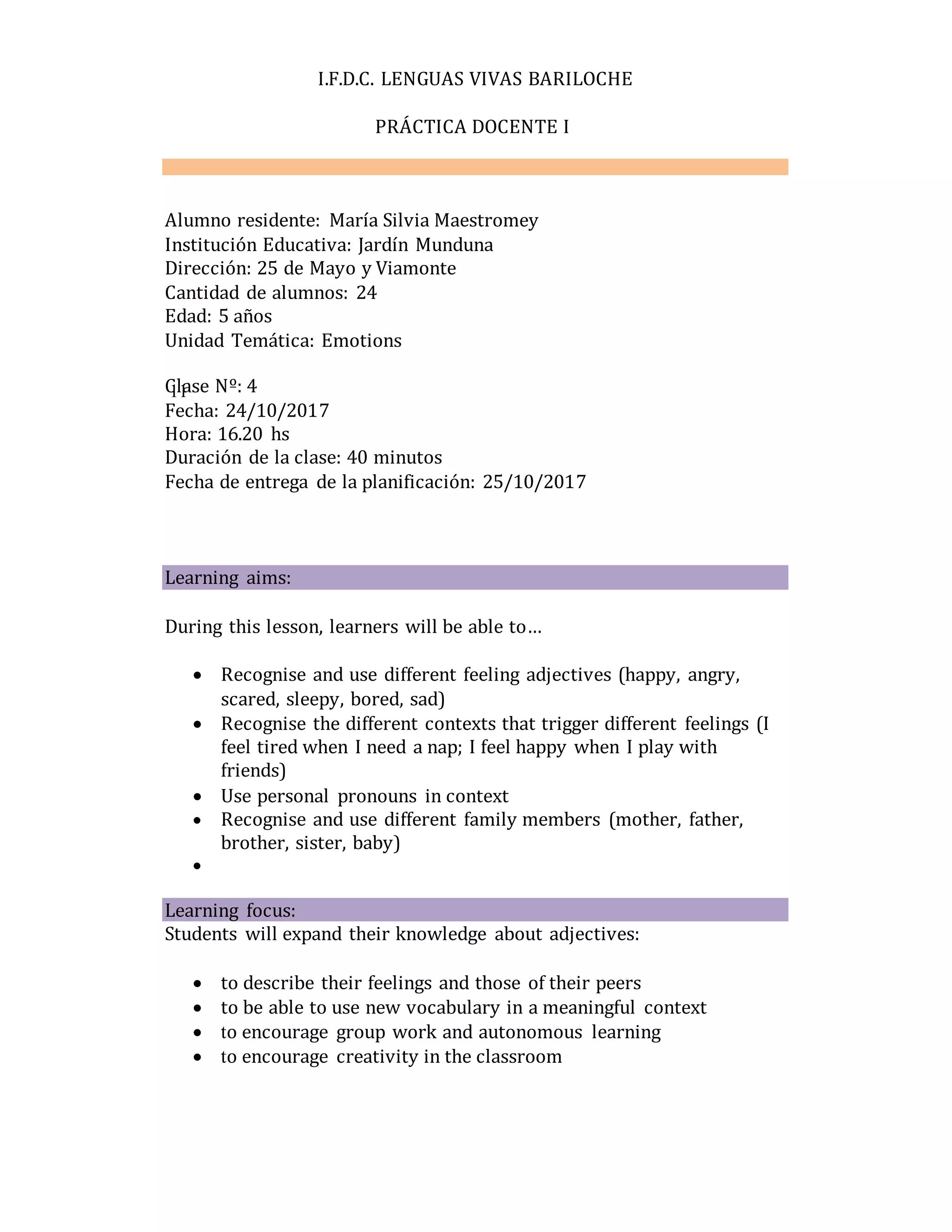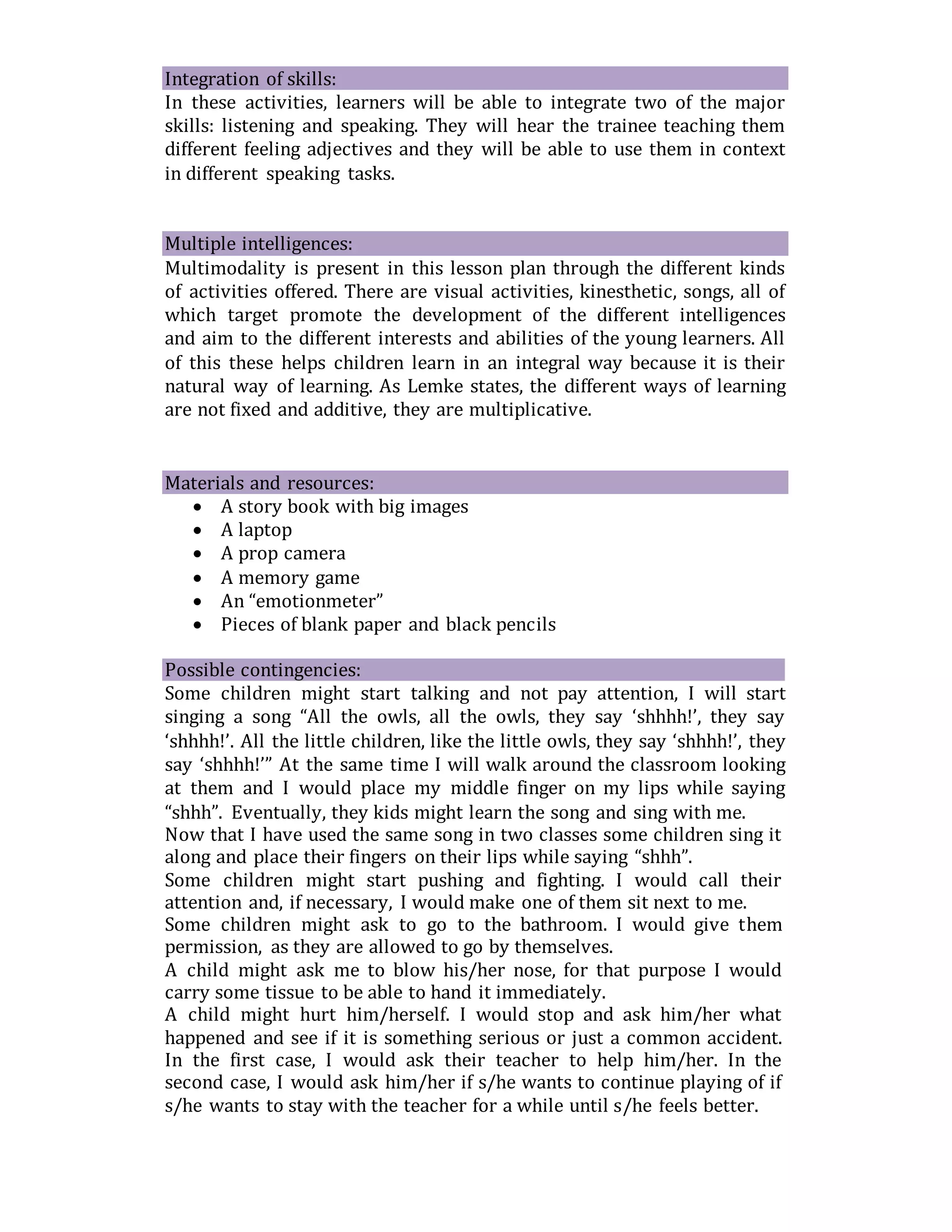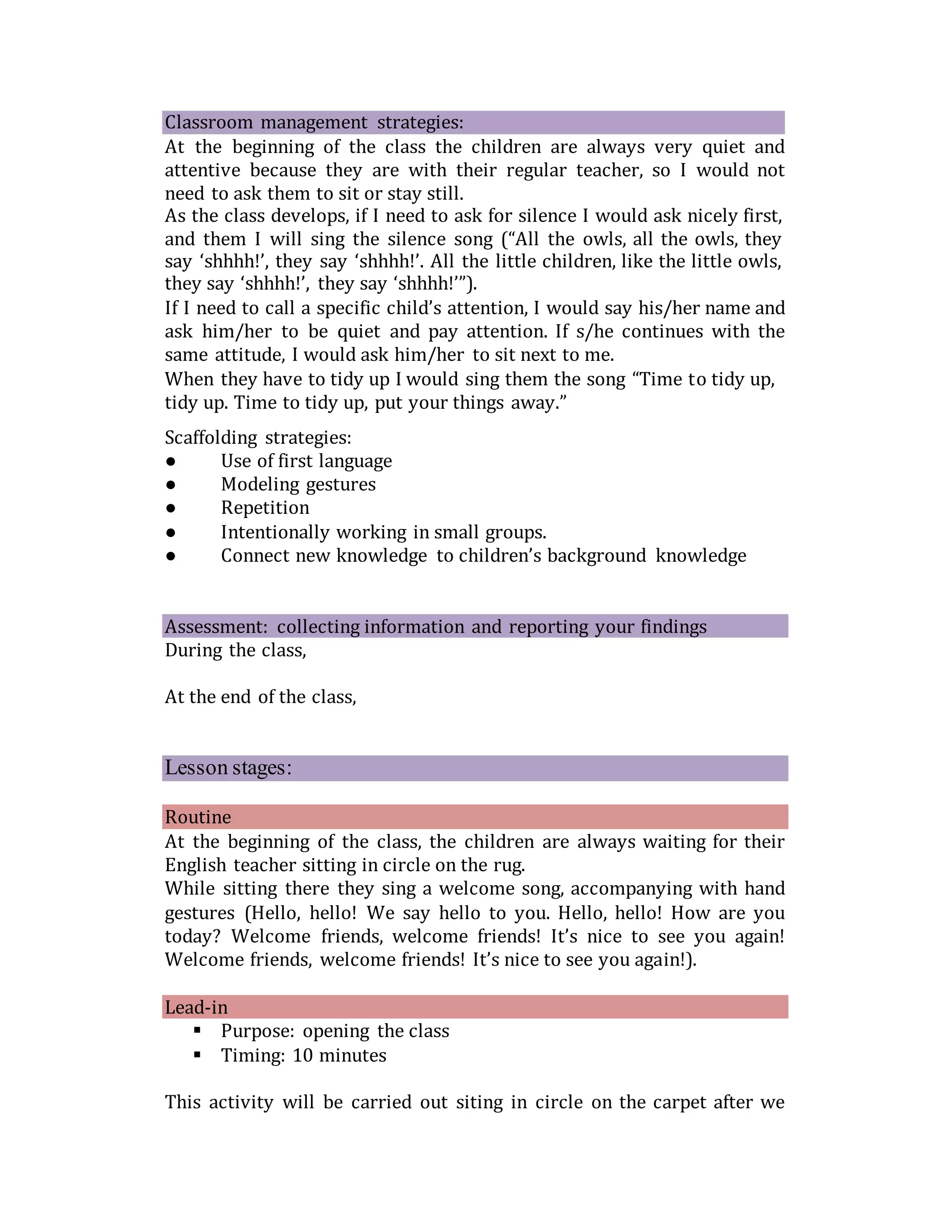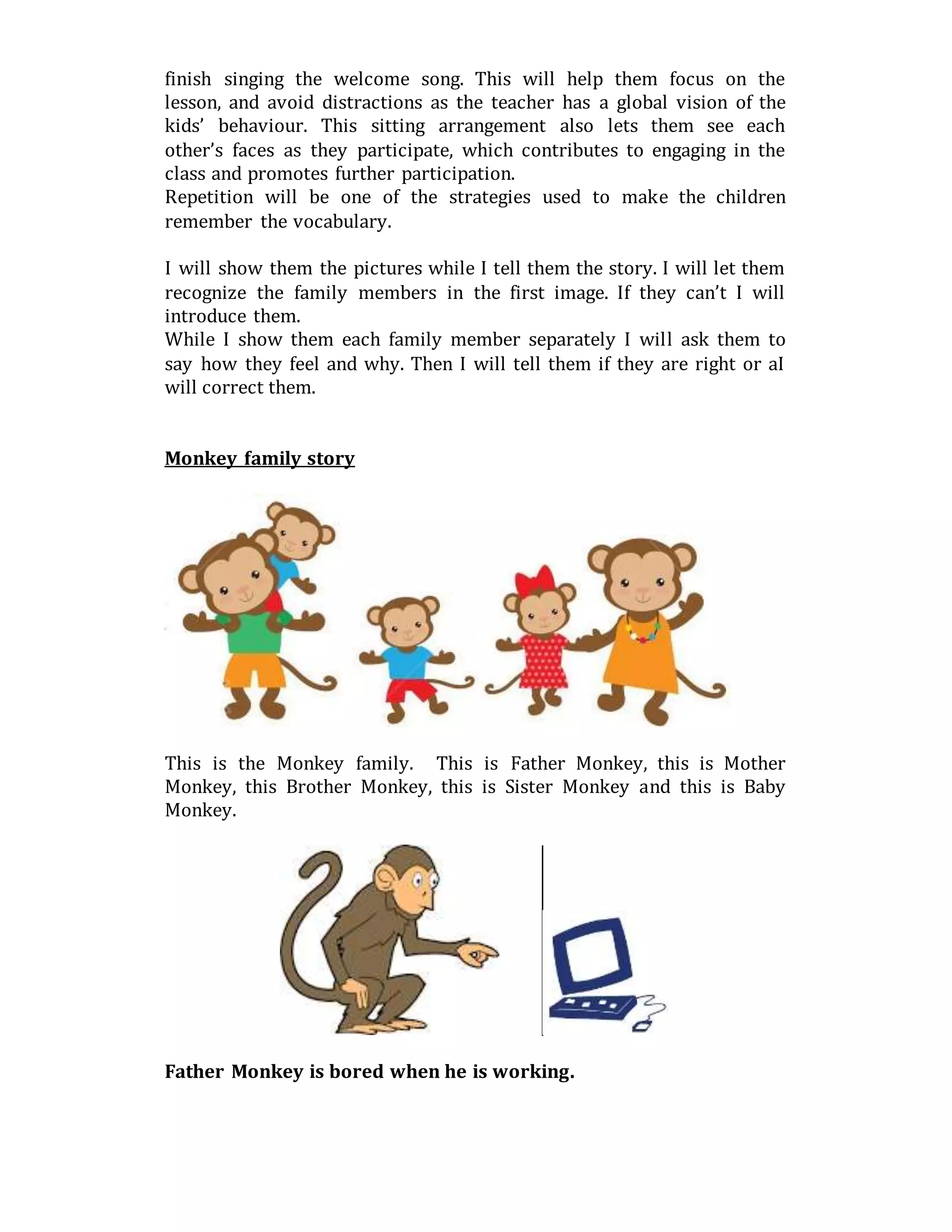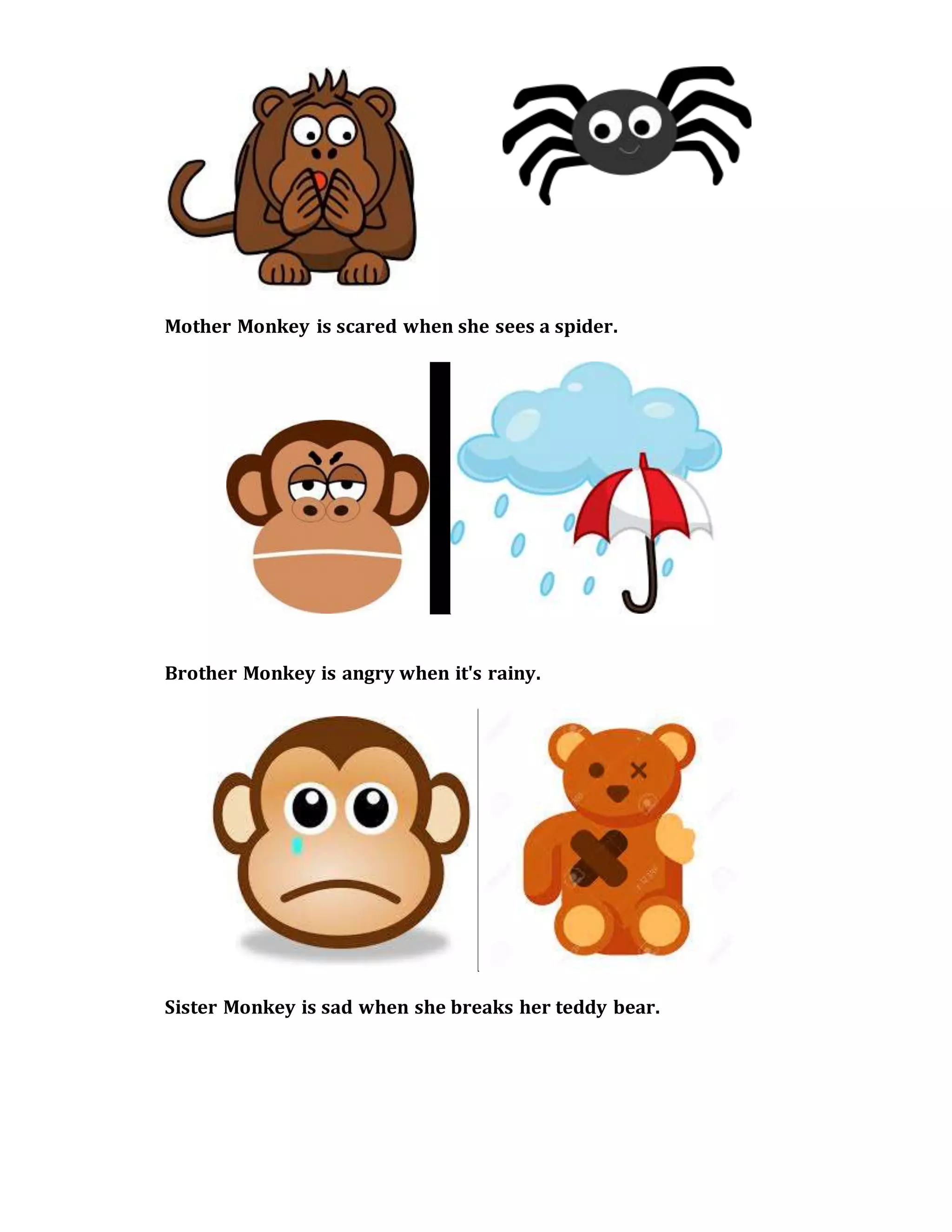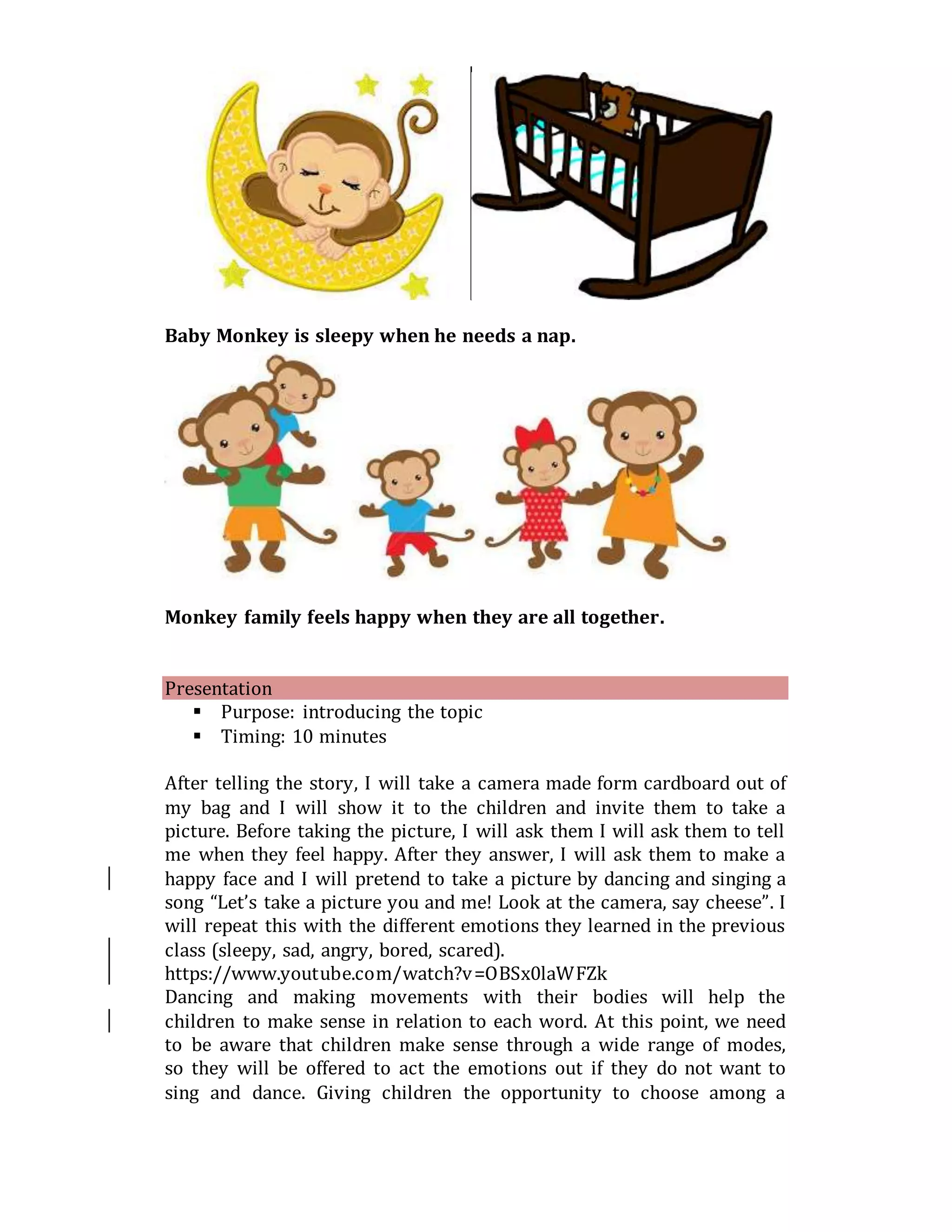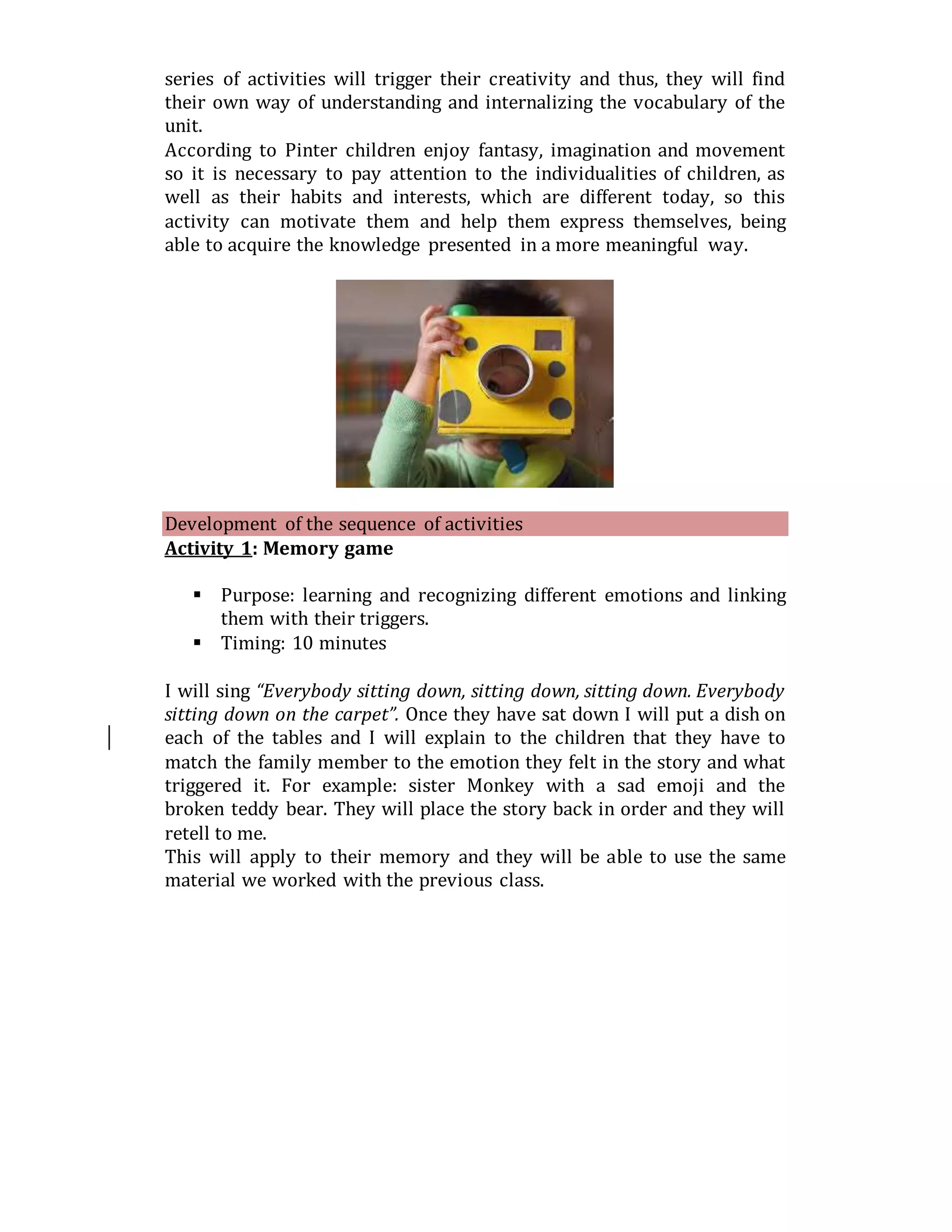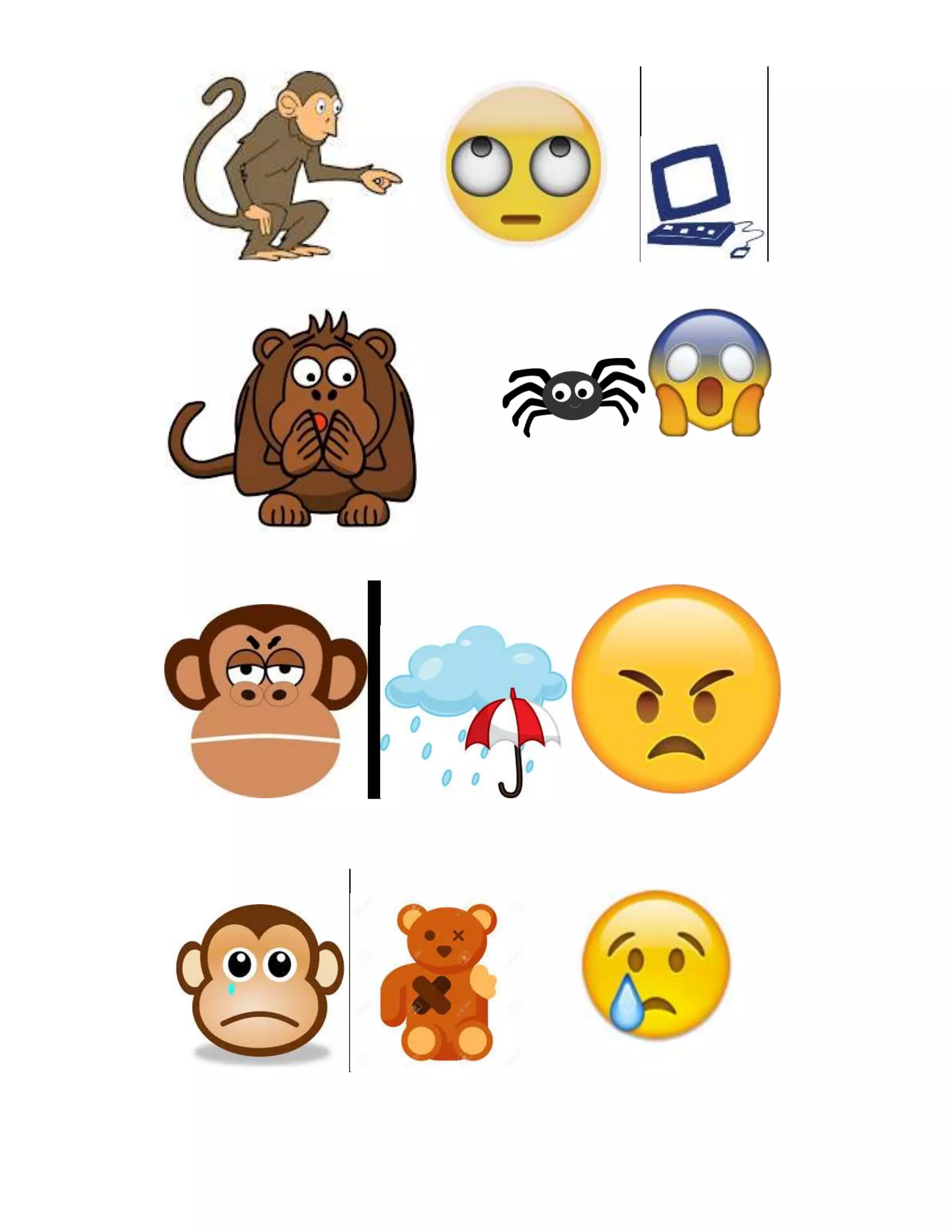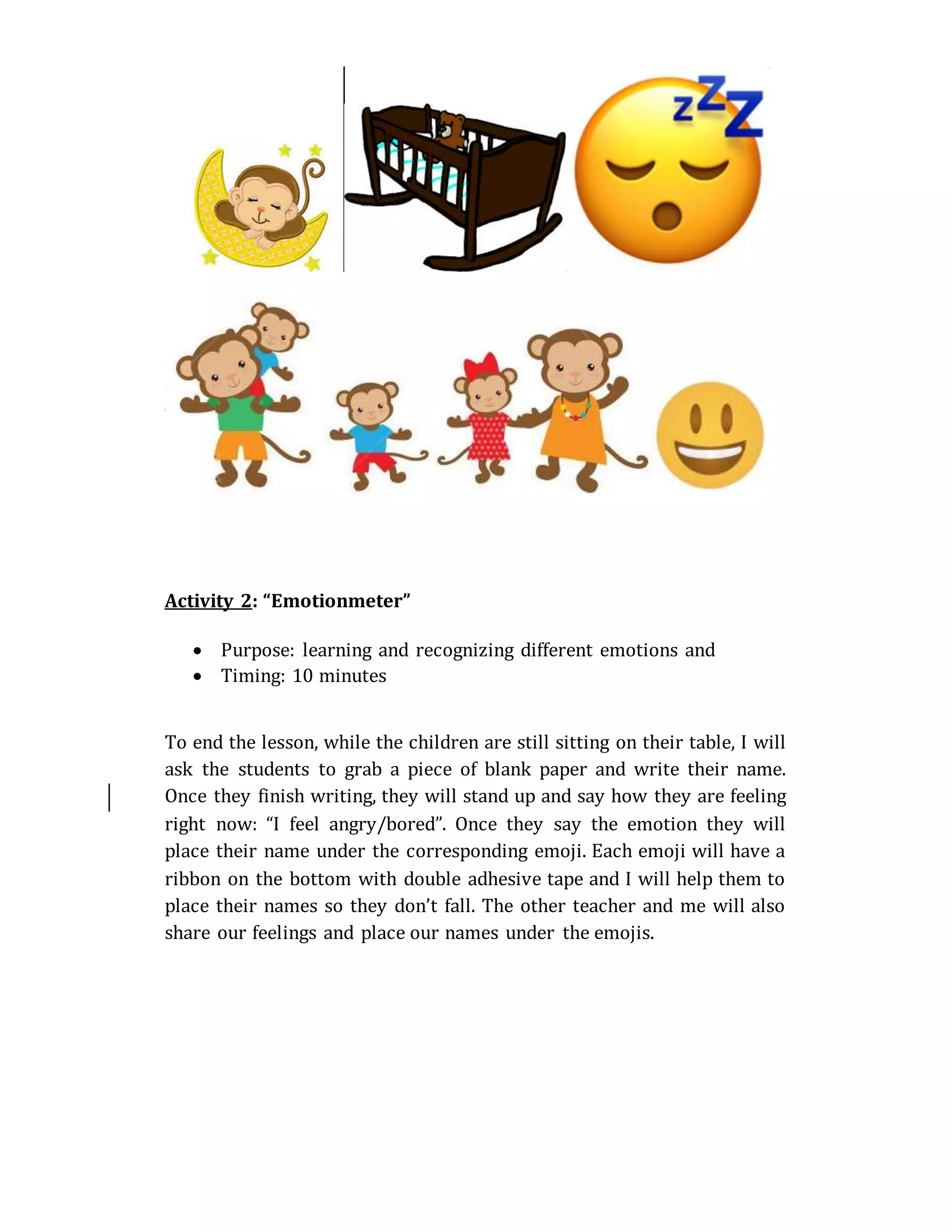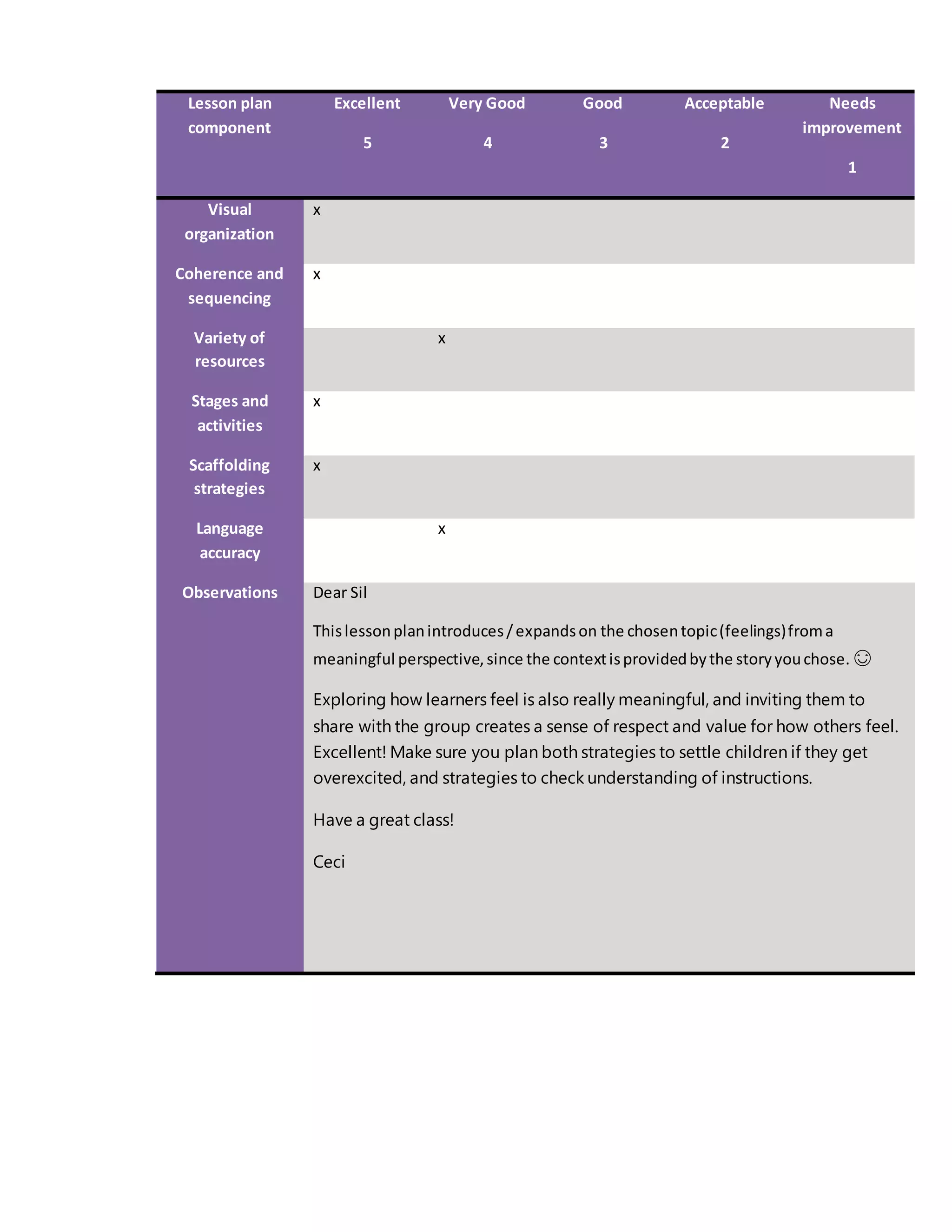This lesson plan aims to teach young learners about feelings and emotions. It begins with telling a story about a monkey family and how each family member feels in different situations. Various activities are then used to reinforce the vocabulary, such as a memory game matching family members to feelings, and an "emotionmeter" where students place their name under an emoji to show how they feel. The plan incorporates songs, movement, and opportunities for self-expression to engage students and make the learning meaningful. Scaffolding strategies like modeling and repetition are also included to support student understanding.
